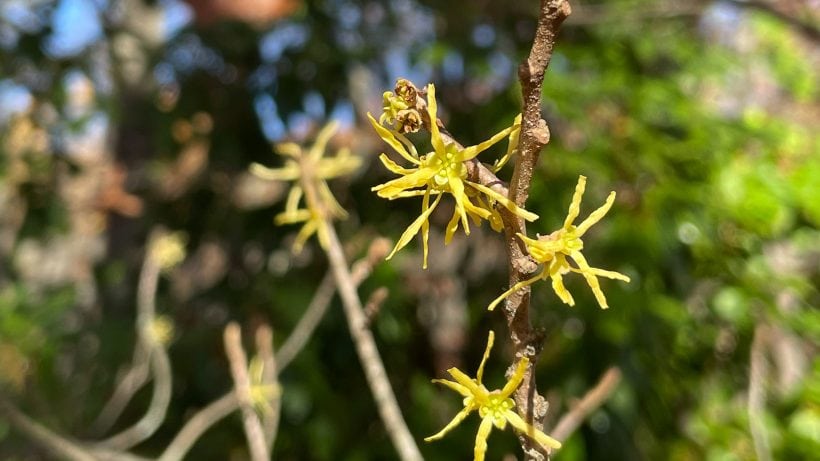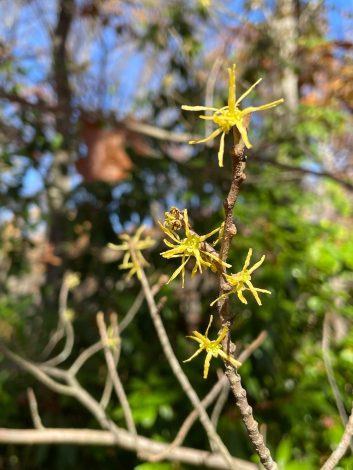November Plant of the Month
Hamamelis virginiana, American Witch Hazel
November is hardly a time many of us associate with floral color. But there’s one plant native to Westchester that uses this time of year to bloom: Hamamelis virginiana, American Witch Hazel. Large and architectural shrubs more familiar for their medicinal value, they’re also popular ornamentals, particularly for their unusual bloom times. However, be mindful when shopping for Witch Hazel at nurseries, for their stock is often Asian or hybrid plants. You can find American Witch Hazel awash with spidery yellow flowers in November, lighting up the woodland understory.
For a long time, the pollinators of Witch Hazels were rather mysterious. Observers have documented a large diversity of insect pollinators visiting the flowers. For any species still active on the occasional warm day, American Witch Hazel is the only shop in town. However, a visit is hardly sufficient to guarantee pollination. Ecologist and author Bernd Heinrich cracked the case. He determined that the primary pollinators of Witch Hazel are species of owlet moths in the Noctuidae family. These particular moths can raise their body temperature by vibrating their wing muscles, allowing them to fly even on cold nights that would ground all other insects. The association with moths doesn’t end there: dozens of species use American Witch Hazel as a host plant.
After pollination, Witch Hazel has a rather dramatic means of distributing its seeds. The protective pod that holds the developing seeds explodes when they fully mature. This rockets them away from the parent plant, sometimes over 30 feet away! These seeds are eaten by a number of animals, including that other November stalwart, the Wild Turkey. Hamamelis virginiana is a fairly common member of upland forest plant communities, and particularly noticeable this time of year. Keep an eye out for its striking yellow blossoms among the browns and greys of the late fall woods.
Mathew McDowell, Wildflower Island Curator




Leave a Reply